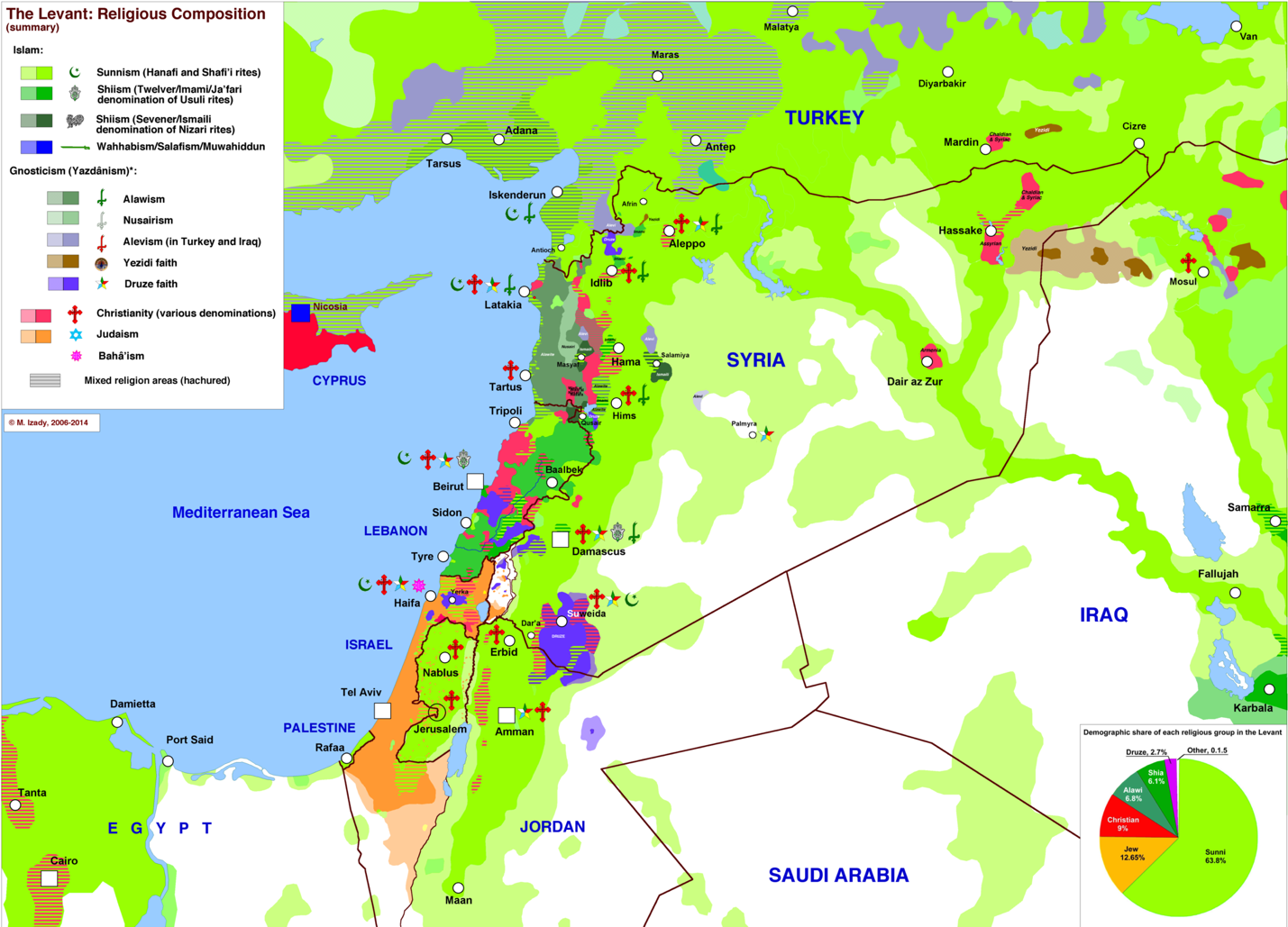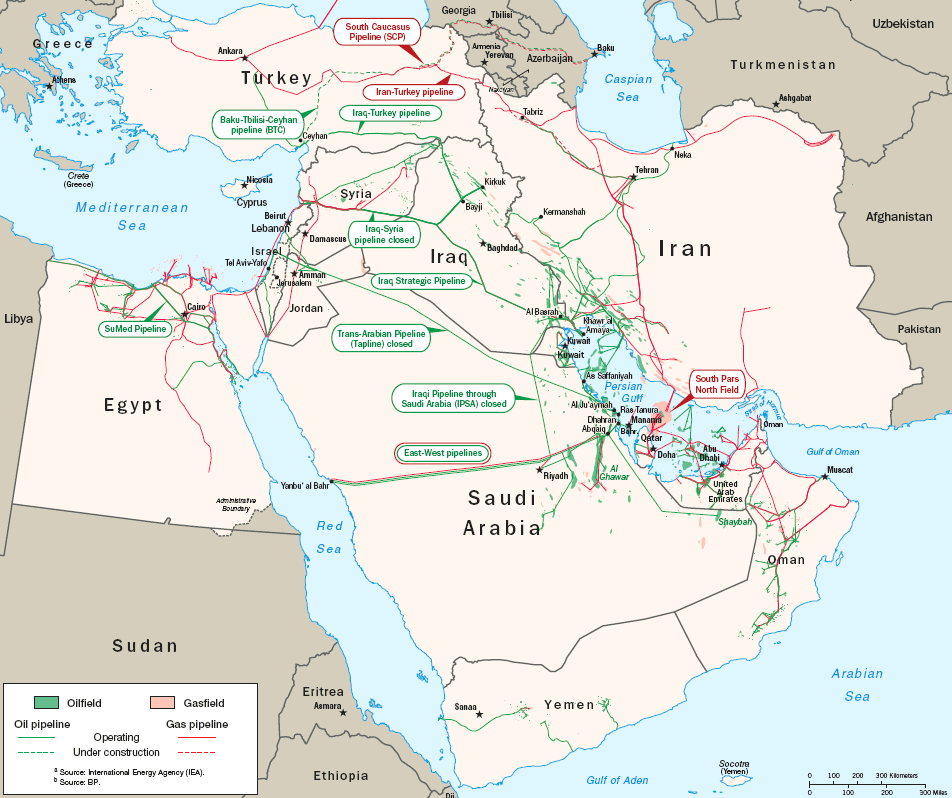The ethnic diversity of the Middle East is mirrored in the number of languages spoken. The bulk of these languages belong to one of three “families” of languages: Semitic, Indo-European, or Turkic (Andersen et al., 2020). Semitic, which includes mostly of Arabic and Hebrew, is the most common and widely spoken language. Map 14 shows that Arabs are the majority in many of Middle Eastern countries, including Turkey and Jordan. Persian is an Indo-European language spoken mostly by Persians in Iran, however, there are also Persian speakers in the United Arab Emirates and Afghanistan.
Ethnic Diversity
Throughout history, the Middle East has acted as a cultural crossroads. Since the 1960s, changes in political and economic situations have had a significant impact on the ethnic composition of groups in the region. While some ethnic groups have resided in the area for millennia, others arrived via immigration quite recently (Goldschmidt & Boum, 2018). The region’s primary ethnic groups include Arabs, Egyptians, Kurds, Persians, Turks, Azerbaijanis, Armenians, and Georgians, while there are dozens of others with hundreds of thousands, if not millions, of people.
As seen on Map 14, Arabs are the majority group in almost every Middle Eastern country. The Persians, the country’s largest ethnic group and forerunners of the ancient Persian empires are most strongly associated with Iran. The strong red in the middle depicts ethnic Kurds, who do not have their own country but are found in considerable numbers throughout Iran, Iraq, Syria, and Turkey (Map 14).

Religious Diversity
The Middle East is the origin of Judaism, Christianity, and Islam, which are all monotheistic religions that arose from the same lineage. Minority religions such as Druze, Bahaism, Yezidism, Alevism, Nusairism, Alawism, Sunnism, Shiism, and Wahhabism can also be found in the Middle East (Abdulmajid, 2018). A deeper examination of Map 21 reveals that Israel stands out for its Jewish majority, but it also serves as a reminder of its Muslim and other minorities, as well as Christian towns in Israel and the West Bank. Furthermore, Lebanon is considered as being divided into huge populations of Sunnis, Shias, Christians, and the Druze faith. There may be a similar effect happening in Syria, which is majority Sunni Muslim but has large minorities of Christians, Druze, Shia, and a Shia sect known as Alawites. Due to the large number of Arabs in the Middle East, Islam is the most popular and widely practiced religion, as seen in Maps 14 and 21. The great majority of Muslims worldwide are Sunni Muslims. Surprisingly, according to Map 21, the majority of the Arab world, including Syria, as well as non-Arab states such as Turkey, Pakistan, and Afghanistan, is Sunni.

Political Diversity
The Middle East is a major producer of oil and natural gas, with a large portion of it being exported. As a result, the world economy is practically reliant on the continued supply of oil and gas. Map 32 shows the locations of the reserves as well as how they are transported overland. Much of it also goes by sea through the Persian Gulf, which holds some of the region’s and world’s most valuable reserves. Furthermore, oil resources are concentrated in three neighboring countries with a long history of hostility: Iran, Iraq, and Saudi Arabia. Moreover, the Suez Canal, a man-made canal, drew Europe and Asia significantly and permanently closer together. As a result of a treaty signed proclaiming the waterway open to trade, the canal now handles around 80% of all world traffic.

References
Abdulmajid, A. (2018). A study on religious diversity and conflict in the Middle East. International Journal of Social Science and Humanities Research, 6(3), 1-7.
Andersen, R. R., Seibert, R. F., & Wagner, J. G. (2020). Politics and change in the Middle East. Routledge.
Goldschmidt, A., & Boum, A. (2018). A concise history of the Middle East. Routledge.